 Home
Home

Dolgarrog is situated in the county of Conwy, North Wales. It is bounded by three rivers – the Afon Ddu to the south, the Afon Porthllwyd to the north, and the Afon Conwy to the east. To the west, on the lower slopes of Moel Eilio (546m) is the glorious backdrop of the woodlands of the Coed Dolgarrog National Nature Reserve. The village is well known for its industrial past and the 1925 Eigiau Dam disaster.

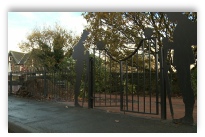
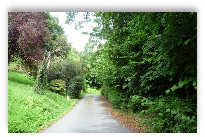
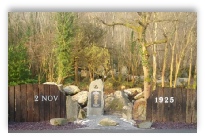
Dolgarrog is in the heart of the beautiful Conwy Valley and within easy access of numerous picturesque walks, lakes and mountains. The nearby Drum and Tal y Fan peaks are 2,526 feet and 2,001 feet respectively and make for a suitable first mountainous climb. The Afon Ddu, running slightly to the south of Dolgarrog, provides the venue for the Gorge Walk. This full gorge walk is conducted by adventure and activity centres and is a challenging day out, scrambling up waterfalls, jumping into plunge pools and wriggling through coves.
There are several walks directly from the village following routes up to ancient villages and roman roads, to the site of the former Eigiau Dam as well as the Memorial Walk, commemorating the dam disaster.
Just over two miles south is the village of Trefriw, the Gwydir Forest and the scenic lakes of Llyn Crafnant and Llyn Geirionydd. The Twin Lakes Walk provides some of the most elegant views in Snowdonia and the walks around the lake are very much worthwhile.
walesdirectory.co.uk
Out and about in and around Dolgarrog
Dolgarrog History Tour
The Legend of Y Carrog
It is believed that the village was established around 1200AD. The name Dolgarrog was given after a flying dragon named Y Carrog. This mythical creature would fly down into the meadow of Dol-
The Gunpowder Plot
A man privy to Guy Fawkes' Gunpowder Plot is said to have lived in the house Ardda'r Myneich (Monks Hill), whose ruins lie in the fields above the road between Porthllwyd and Dolgarrog bridges. Dr Thomas Williams (1550–1622), rector of St Peter's Church, Llanbedr-
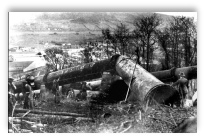

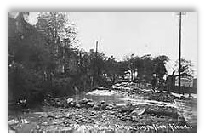
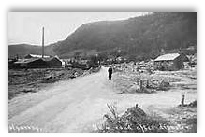
The Eigiau Dam Disaster
On 2 November 1925, the failure of two dams caused a flood that swamped the village of Dolgarrog, killing 16 people, including 6 children. The disaster was started by the failure of the Eigiau Dam, a gravity dam owned by the Aluminium Corporation. The water released from the reservoir flooded downstream, and overtopped the Coedty Dam, an embankment dam. This dam also subsequently failed releasing millions of gallons of water and thousands of tons of Ice Age boulders down a narrow gorge onto the village.
Many more villagers could have been killed had they not been in the local theatre watching a film that night.
The disaster at Dolgarrog led the British parliament to pass the Reservoirs (Safety Provisions) Act in 1930 that introduced laws on the safety of reservoirs. This has since been updated, and the current one is the Reservoirs Act, 1975.
In 2004 a £60,000 memorial trail was created, explaining the tragic story to walkers. The trail takes visitors to where the boulders from the damaged dam reside. The project was opened by the last survivor of the dam disaster, Fred Brown, who on that night lost his mother and his younger sister.
The construction of Eigiau dam had been facilitated by the construction of the Eigiau Tramway, which largely followed the route of the Cedryn Quarry Tramway from Dolgarrog. The incline was upgraded (and the lower section re-
The line of the railway incline has today been replaced by a second pipeline, and the adjoining hillsides are wooded. However, there is a public footpath which goes up the hillside to the left of the pipeline, and in places the timberwork can still be seen. Today the left pipeline (viewed from Dolgarrog) carries water from Llyn Cowlyd; the right pipeline carries water from Coedty reservoir.
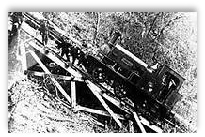



Dolgarrog’s Industrial Heritage
Dolgarrog’s industrialisation began in the 18th century with a flour mill on Porthllwyd river to crush corn for local farmers. There was also a woollen mill at Dolgarrog bridge and the Abbey mill.
The successful Porthllwyd mill was expanded by John Lloyd, son of founder Richard Lloyd. As well as grinding flour, he bought machines to make paper and flock for bedding. Paper from Porthllwyd supplied local printers, including John Jones, printer of Trefriw and later Llanrwst.
In 1885 the villagers wanted to start a school at Porthllwyd. The old village of Dolgarrog appealed to Mr Robins, the then proprietor of the paper-
The Dolgarrog sawmill of John Williams also flourished. It exported hundreds of tons of wooden railway sleepers for the new railways between 1845 and 1865. When the first sod was cut for the Conwy and Llanrwst Railway track on 25 August 1860, on Lord Newborough's land at Abbey, Dolgarrog, it was John Williams who supplied the sleepers.
Dolgarrog and the Railways
In 1918 the Aluminium Corporation of Dolgarrog acquired a controlling interest in the North Wales Power & Traction Company. Dolgarrog consequently became the administrative centre of this company, and its chairman was Henry Joseph Jack. The company intended to supply electricity to the railways of north Wales, and was behind the proposed Portmadoc, Beddgelert and South Snowdon Railway. Jack subsequently purchased majority shares in the Ffestiniog Railway, the Welsh Highland Railway and the Snowdon Mountain Railway, meaning that he was in control of all the passenger carrying narrow-
The Dolgarrog Railway Society aims to re-
The Aluminium Works
The Aluminium Works (or "smelter") was originally planned in 1895. Water from reservoirs in the Snowdonia mountains would provide the hydro-
In 1907, aluminium production began in the factory and in 1916 a rolling mill was added. In 1924, the hydro-
During the Second World War the aluminium works were under the control of the Ministry of Aircraft Production and provided parts for aircraft. It is rumoured that the Luftwaffe tried to destroy the works, but the bomber that was sent was shot down, and crash-
The factory is no longer operating, smelting having already ceased in the 1940s. Alcoa bought out the company Luxfer in 2000 and announced its closure in June 2002. Dolgarrog Aluminium Ltd formed in 2002 and acquired the assets from Alcoa in 2002. The factory closed in late 2007 and was demolished in 2009.

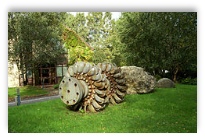
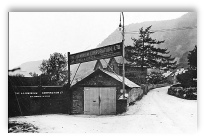
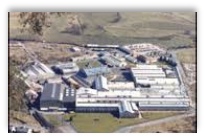
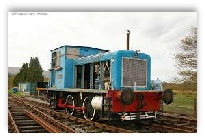
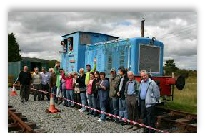
WELCOME TO DOLGARROG